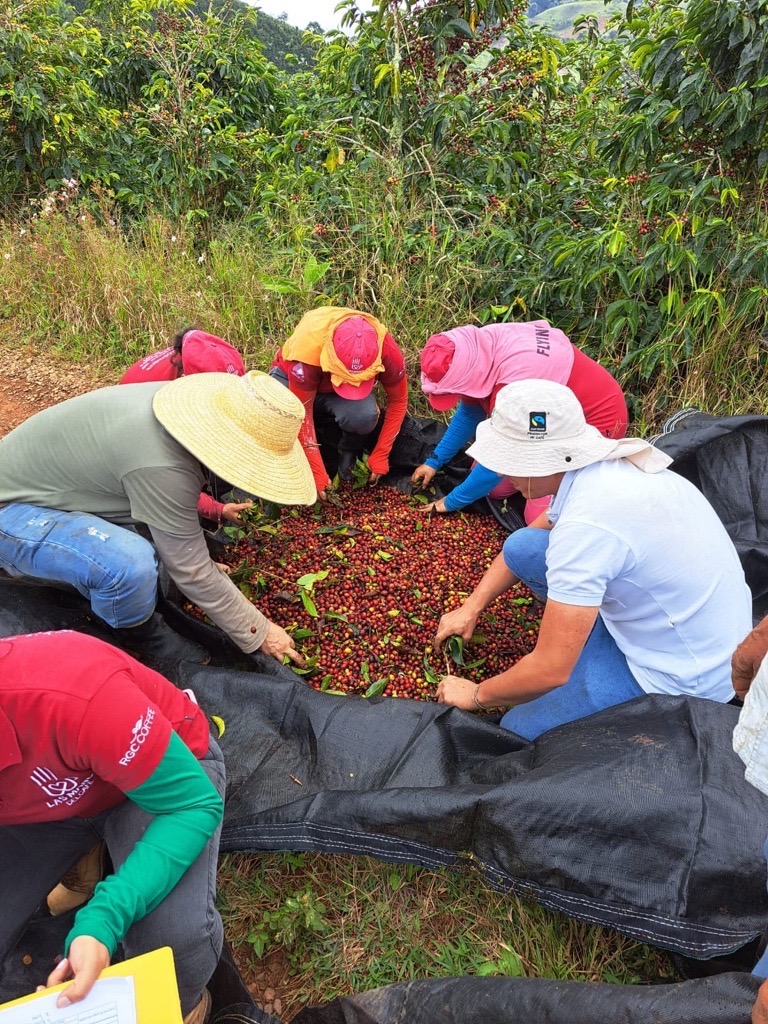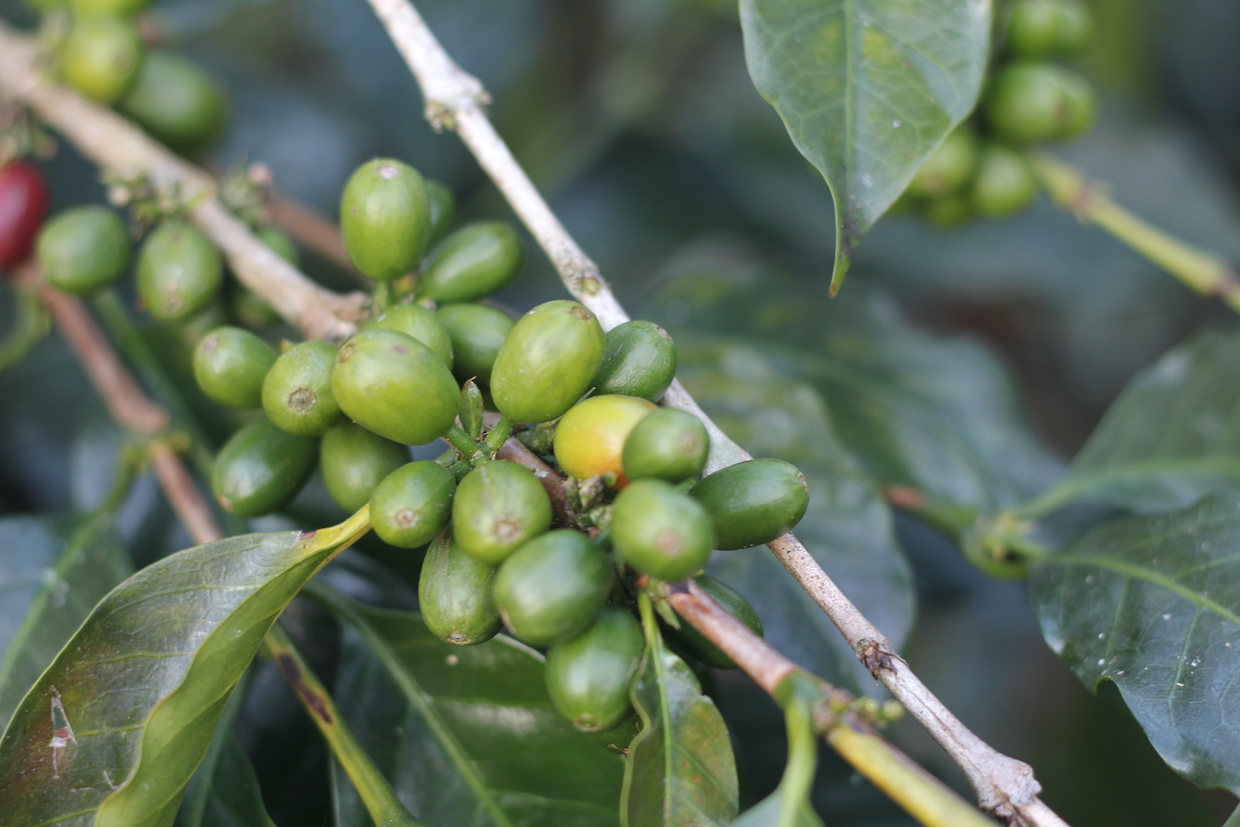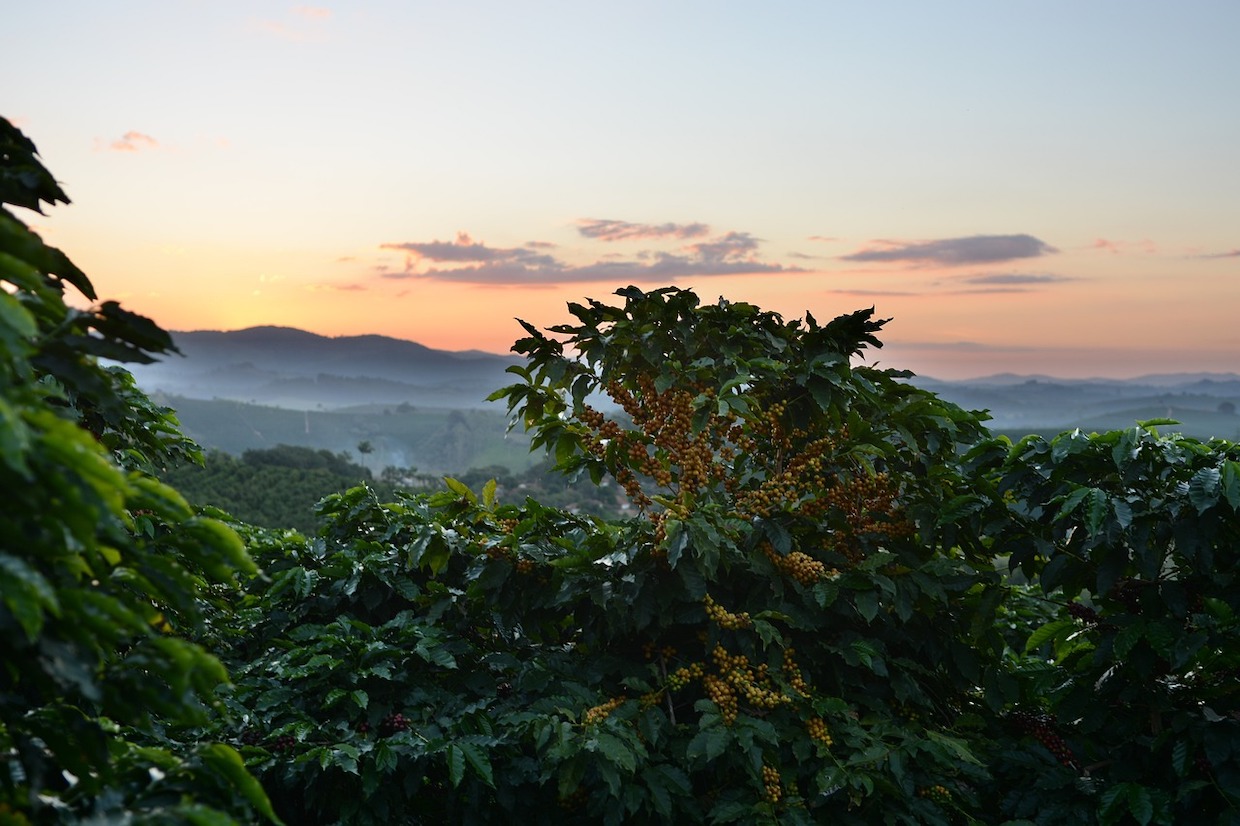[Editor’s note: This is the seventh article in an editorial series led by Verité exploring labor issues affecting the global coffee sector through its U.S. Department of Labor-funded Cooperation On Fair, Free, Equitable Employment (COFFEE Project). See more of Verité’s work on coffee here. Daily Coffee News does not engage in sponsored content of any kind and all views or opinions expressed in this piece are those of the author/s.]
During this series, we have described the most pressing labor risks uncovered by Verité research in the Latin American coffee sector. We have also suggested steps that coffee farmers and companies can take to address these risks.
In this article, we highlight the need for coffee roasters, traders and retailers to provide farmers with the support necessary to effectively implement these recommendations through the provision of living incomes and living wages. The improvement of labor conditions in the coffee sector is the responsibility of every actor in the supply chain, not just farmers.
As coffee companies increasingly work towards promoting living wages for workers across their supply chains, it is important to emphasize that farmers who are earning less than a living income will find it difficult to pay their workers a living wage.
On the flip side, simply increasing coffee prices to guarantee farmers a living income does not necessarily lead to a living wage workers, as the trickle-down economics principle has been proven to be as ineffective in rural contexts as it has been in the United States.
Therefore, coffee companies should work with farmers in their supply chains, both to ensure that they are earning a living income and to incentivize and monitor the payment of living wages to workers.
Another option is to implement systems to provide premiums or services directly to workers in order to improve their incomes and wellbeing. Fortunately, there is a variety of living income and living wage studies, as well as cost-effective solutions at the farm level that coffee farmers and companies can implement to improve workers’ incomes and wellbeing.
An Example from Colombia
Verité, in partnership with the Anker Research Institute, recently published a living income and living wage report for rural areas in Central Colombia, including Colombia’s famed eje cafetero (coffee axis).
The study provides living income and living wage benchmarks, both for the COFFEE pilot project in Colombia, as well as for the Colombian coffee sector more broadly.
The Colombia pilot project seeks to improve workers’ incomes and wellbeing through cost-effective alternative and complimentary compensation approaches that do not create an economic burden on farmers, especially smallholders who often earn less than the living income.
Instead, the project seeks to create shared value for both workers and farmers by increasing worker incomes, wellbeing, satisfaction, retention, and productivity.
The report revealed that the living wage in the region is about 50% higher than the Colombian minimum wage. Although coffee harvesters may earn close to a living wage during the harvest season, many workers depend on the income generated during the harvest to support their families for the whole year. This is an important distinction for the coffee sector, as only about 5% of coffee workers are permanent workers with access to year-round incomes, social protection and benefits.
Recognizing that piece-rate payment is a common and risky practice in the coffee sector, Verité’s COFFEE Project is piloting alternative payment approaches and documenting the effects of worker wellbeing programs, in partnership with the socially responsible coffee trader RGC Coffee and its Manos del Café project, as well as its local partner, the Salgar Coffee Growers’ Cooperative.
The project conducted workshops and interviews with workers and coffee farmers to gather their input and preferences regarding alternative payment models, complementary compensation schemes and worker wellbeing programs. Based on worker input suggesting an almost equal preference for increased wages and worker wellbeing programs, the COFFEE project piloted and evaluated a range of different interventions to determine their effects and opportunities for scaling and replication.
One of the interventions involved the use of specialized harvesting tools such as lonas (plastic sheeting) and canguaros (webbed gloves) to improve worker productivity and incomes without increasing working hours or the level of exertion. These tools decreased ergonomic risks for workers while helping to control pests and diseases for farmers.

Workers use lonas (plastic sheeting) to sort out leaves from freshly picked coffee cherries. Photo credit: Verité
Verité documented important lessons learned, such as the fact that lonas are more effective during the peak harvest, while canguaros work better during the off-peak season. In addition, the use of lonas proved to be especially effective in increasing women’s productivity, resulting in a reduction in the productivity gap between men and women — which is often related to women having to perform unremunerated work, reducing the time they can spend harvesting coffee.
While there are some challenges in scaling up usage, including small initial investments and training, such tools present a potential win-win solution for workers and farmers.
The project is also evaluating an approach focused on entrepreneurship and the generation of complementary income streams for farmworkers. Through the Manos del Café project, RGC has been providing farmworkers with training, support and access to capital to help them build microenterprises.
One of the important lessons learned is that this approach has been much more successful with workers who were enthusiastic about participating at the outset than it has been with workers who are more reluctant. Additionally, because workers are often focused on meeting their basic needs while living from paycheck to paycheck, it is essential to provide them with incentives that offset the additional time and investment they might need to launch their microenterprises.
Finally, the COFFEE Project is also measuring the effects of the Manos del Café worker wellbeing program, which gives farmworkers access to medical and dental services, recreational activities, savings programs and social security benefits. Early learnings from this pilot project indicate that workers strongly value programs that recognize their needs and preferences and provide them with immediate tangible benefits, such as access to medical specialists.
Having a better understanding of living income and living wage gaps for farmers and farmworkers clearly shows that there is a need for cost-effective solutions that mutually benefit both workers and farmers, increasing workers’ incomes and wellbeing, while providing benefits to farmers, and not cutting into their already thin profit margins.
These types of initiatives need to be tested in specific contexts with constant input from farmers and farmworkers alike. Only by including farmers and farmworkers in the design, implementation and evaluation of these interventions can we develop models that will be effective in closing living wage and living income gaps and reducing labor risks in the coffee sector.
Quinn Kepes and Miguel Zamora
Quinn Kepes is a Senior Director at Verité, where he has worked for over 15 years providing businesses, investors, governments, intergovernmental organizations, workers, and civil society the knowledge and tools that they need to eliminate the most serious labor and human rights abuses from global supply chains. He leads Verité’s practice groups on Worker Agency, Voice and Empowerment (WAVE) and Applied Research for Evidence and Action (AREA). Mr. Kepes has been working on labor
issues in the coffee sector for over 15 years and has conducted and directed field research on labor issues on coffee farms in Mexico, Guatemala, Honduras, Colombia, Brazil, and Uganda.
Miguel Zamora has been involved in agriculture for over 25 years. He has worked in farming, research, extension, business development, and economic development initiatives. From Rural Voices CIC, he supports farmers, workers and companies building more sustainable and resilient supply chains. Miguel supports Verité’s initiatives to create and promote adoption of robust resources to identify, mitigate and prevent labor abuses in agriculture.









Comment